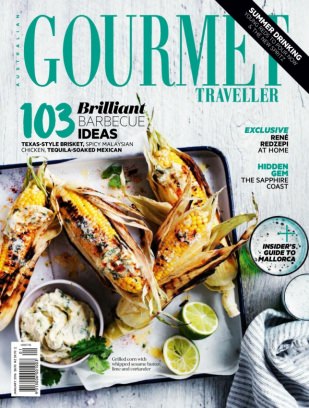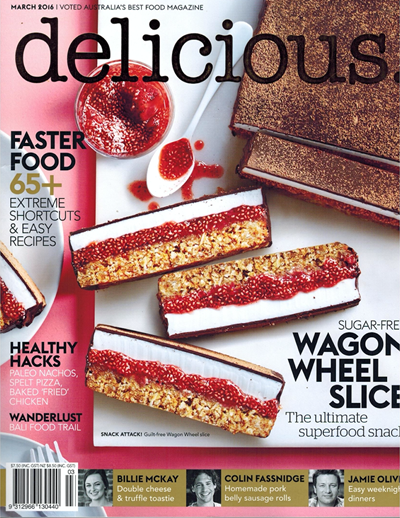In an era where magazines are fighting to the death, the food category somehow manages to enjoy considerable success, and while dipping slightly in the circulation field, this arena remains a step above the likes of women’s, men’s and celeb titles.
According to the most recent AMAA circulation figures, the food category in Australia circulates close to 400,000 printed publications over six months, and that’s not even attesting to its strong readership online, which taste.com.au continues to dominate.
Magazine industry body group Magazine Networks has released (exclusively to B&T) the findings of a report into the attitude of Australian magazines readers, 82 per cent of readers are influenced by the content in food magazines, from a sample of over 1000 readers of the category.
Explaining this fascination with food, NewsLifeMedia’s director of food Fiona Nilsson said, “Australia is a nation obsessed by food. Nearly 13 million Australians engage with food every month, with one in two now considering themselves a foodie.
“Food impacts all areas of our life from health and finances to travel and kitchen design to family and our social lives. Food magazines are highly inspiring and encourage discovery; and the quality of the triple-tested recipes in every issue builds trust.”
As a result, Nilsson added, this influences the extent to which food mag readers engage with – and trust – advertising in these publications.
Sixty-six per cent were influenced by the recommended or featured products shown to them in the mag, while a further 65 per cent believed the ads in the magazines were chosen to suit like-minded readers, and 58 per cent were influenced by these ads.
On top of that, one in five survey respondents bought products featured in the latest food magazines, and while readers felt equally inspired by the content both in print and online, print was the most influential medium, pushing 67 per cent of readers to action in response to an ad.
Arguably the most important part of the study was the influence food magazines have in establishing a brand presence and inspiring affinity with certain brand names.
Food magazines drove brand discovery by 44 per cent, and built familiarity with readers by 56 per cent. The impact of advertisers in food magazines also includes driving advocacy, and desire, of a brand by 57 and 39 per cent, respectively.
Compared to readers who had not seen an advert in a food magazine, advertisers in these publications drove awareness by 78 per cent, and saw 67 per cent likely to purchase the product being advertised. This was 13 per cent higher than those who hadn’t seen the advert.
When survey respondents were asked about brand perception based on ads in the mag, 22 per cent agreed they wanted to tell others about the brand, 32 per cent felt it was a brand they’d like to own, and a massive 50 per cent associated trust with the brand, as opposed to those who hadn’t seen the advert in a food mag.
“Advertisers understand that so many decisions we make about our families, our homes and our purchases all revolve around food and are leveraging off that. Food is also a major passion point and advertisers are increasingly looking to connect with people through passion points,” Nilsson explained.
“Consumers are far more likely to take notice of ads if they are engaged with the content. There is a real skill in creating the right content to really engage audiences and in storytelling. Briefs that include content that clients can use in their owned media and amplify in earned media are coming in weekly and this is up dramatically on last year for us.”
Within the category, it’s shown that the content helps build confidence and knowledge, with 87 per cent of the readers claiming they relied on what the magazine brand was telling them and 84 per cent believing the magazine creates their content for audiences just like them.
“This is reflected in the latest research study conducted by Magazine Networks with one in three readers learning something new or surprising the last time they read a food magazine,” Nilsson added.
“Food brands are multi-platform and they keep pushing boundaries. The demand for content keeps growing so having strong consumer insights is very important to deliver to consumer needs,” said Nilsson.
“You also need to understand not only what content is trending but also the food journey, from inspiring content and trends, to an audiences’ planning, purchasing and cooking behaviours. Events are helping us create a closer bond between the consumer and the brand by immersing them in a fun and memorable experience – this all adds to the very high customer loyalty of our food audiences.
“Inspiration, discovery and the lean back experience are important to food magazines. Today’s food consumer owns multiple devices and uses them seamlessly through the day,” Nilsson added.
“They may get inspired by a recipe in a magazine, search for similar recipes online on their desktop, create a shopping list on their smartphone and then access this at the point of purchase and, in the kitchen, follow a step by step recipe on their iPad.
“The key to success here is to have really relevant and complementary content that makes sense for each touch-point or device. The strength of food in digital editions is a good example of this as these extend our brands into the kitchen in a really meaningful way with tools like cook mode and additional content such as how to videos, tips and tricks and secret ingredients.
“We consider the magazine to be the collectable and the iPad is the tool in the kitchen when you’re cooking.”











